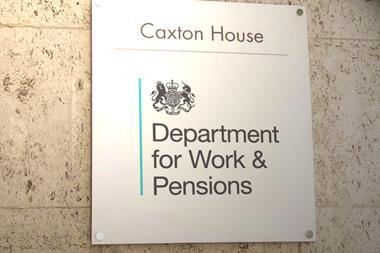The UK’s Pension Protection Fund (PPF) has launched a consultation on proposed changes to the assumptions it uses for s143 valuations which provide an estimated price for securing PPF benefits with bulk annuity providers in the buyout market.
When a scheme’s employer becomes insolvent, triggering the entry of an eligible defined benefit (DB) scheme into a PPF assessment period, a s143 valuation is used to assess if the scheme can secure benefits with an insurer at or above the levels provided by the PPF.
In a consultation launched today, the PPF is proposing to allow actuaries to use a bespoke discount rate assumption when conducting a s143 valuation of schemes with liabilities of less than around £50m.
It pointed out that actuaries use a number of assumptions when undertaking these valuations – this includes a prescribed discount rate assumption. For larger schemes, this assumption leads to an accurate estimate of the price of securing PPF benefits with an insurer. However, it said that the relative price for smaller schemes to secure an insurance buyout is typically higher and the use of a standard discount rate is therefore underestimating the buyout price for these schemes.
The fund added that feedback from marginally overfunded smaller schemes that enter the buyout market has shown they often struggle to receive affordable buyout quotes, and usually run on as closed schemes before re-entering the PPF.
The proposed changes will not impact s179 valuations, the lifeboat added.
Currently the PPF only permits actuaries to use bespoke s143 assumptions for mortality, some other demographic assumptions, and expenses, where there is sufficient evidence to justify them.
Following discussions with six bulk annuity providers and eight PPF-panel trustee and advisory firms, the PPF concluded that otherwise the current standard assumptions generally remain appropriate.
The consultation will close on 6 May and seeks views from actuarial professionals and industry stakeholders on this approach and, if there is agreement when it should be introduced.
Shalin Bhagwan, chief actuary and interim chief finance officer for the PPF, said that for smaller schemes that enter a PPF assessment period, the current assumptions are likely to be understating their liabilities. This means marginally overfunded smaller schemes typically exit PPF assessment to pursue deals with buyout providers.
However, due to their size and being only marginally overfunded, they often can’t get an affordable buyout quotation for even PPF levels of compensation, he added.
This also results in additional administrative costs as they run on as closed schemes looking for buyout solutions.
Bhagwan added that after all options have been exhausted, the schemes often wind up back at the PPF. This can be a prolonged and costly experience for both the trustees and members.
“We hope these proposed changes will have a positive impact on marginally overfunded smaller schemes that enter our assessment period. We look forward to hearing from actuarial professionals and trustees on our consultation proposals,” he said.
Read the digital edition of IPE’s latest magazine
























